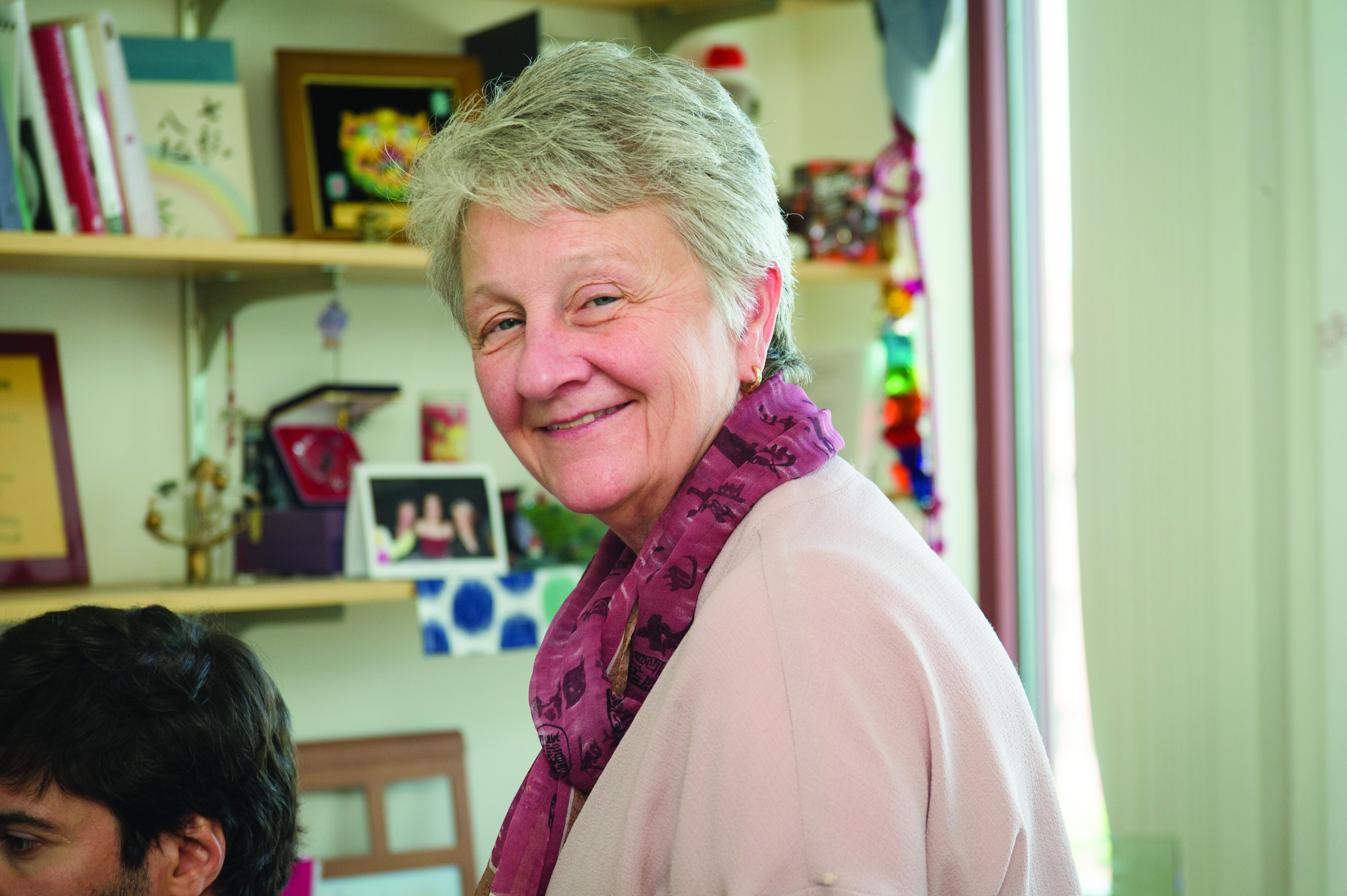Improving Cancer Care Through Patient-Reported Outcomes
Technology can—at times—seem miraculous, especially as it evolves in healthcare settings. Simple technologic tools have been able to lower costs, increase efficiency, minimize delays in treatment times, and even provide new, lifesaving procedures for cancer treatment.
Some of the newest technologies sound like they’re ripped straight from the pages of science fiction stories. However, there’s one important component to cancer care that technology can’t replace—a patient’s experience in her or his own words.
Listening to feedback from patients is still one of the most important ways providers can assess and plan treatments for patients with cancer. Patient-reported outcomes (PROs) are important to evaluate in numerous healthcare settings. Marrying technologic advancements and PROs in cancer care could lead to improved outcomes for patients. New opportunities are emerging to implement PROs in practice by integrating with new and existing healthcare technologies—and oncology nurses are leading the way.

The Importance of PROs
The clinical benefits of PROs are still being studied in oncology research communities throughout the United States. To obtain quantifiable, actionable data, many studies are defining the efficacy and benefits of implementing PROs into the standard of care, including improved survival rates (http://jamanetwork.com/journals/jama/fullarticle/2630810) compared to standard care and the importance of early intervention of symptoms (http://jamanetwork.com/journals/jama/fullarticle/2630810).
“Nurses responded to symptom alerts (http://jamanetwork.com/journals/jama/fullarticle/2630810) 77% of the time with discrete clinical interventions including calls to provide symptom management counseling, supportive medications, chemotherapy dose modifications, and referrals,” which helped to prevent future complications to care.
Pam Ginex, EdD, RN, OCN®, ONS’s senior manager of evidence-based practice, recognizes the important role oncology nurse play in PROs in clinical practice. “PROs can measure a lot of different symptoms in practice,” Ginex says. “They focus heavily on symptoms like pain, fatigue, dyspnea, physical function, and even quality-of-life factors that impact the patient experience. PROs can offer insight into how our patients are feeling and responding to treatment that complements the assessment from the medical team.”
The goal isn’t just to collect the outcomes and patient experiences; it also means we have to know what to do with that data. Resources like ONS’s Putting Evidence Into Practice interventions can detail the ways to ameliorate symptoms in patients.
Ginex noted the value of PROs in practice as an added level of information collection and assessment for patients. Through the data collected, oncology nurses can identify symptoms earlier and offer helpful interventions in practice.
“The goal isn’t just to collect the outcomes and patient experiences; it also means we have to know what to do with that data,” Ginex says. “That’s where educational tools and best practices can offer assistance. Resources like ONS’s Putting Evidence Into Practice (PEP) interventions can detail the ways to ameliorate symptoms in patients. They also offer key information about what not to do in practice when addressing a specific patient’s symptoms.”
Leveraging Existing Technologies
Implementing collection of PROs into practice could require multiple stakeholders to buy into the process. This includes using existing technologies to accelerate the use of PROs in everyday practice. Electronic health record (EHR) companies can help standardize the collection of PROs through the technology that already exists in hospitals and clinics throughout the country. As data and research continue to support the benefits of PROs, it may only be a matter of time before EHRs help with implementation.
“Providers will need to team up with EHR companies,” Ginex notes. “These companies are working with thousands of hospitals, and—through collaboration with healthcare providers—could usher in changes to include PROs throughout hospitals using these programs. With the inclusion of PROs in EHRs, patient symptoms can be documented appropriately, shared among multidisciplinary team members, and tracked accurately over the course of a patient’s treatment.”

However, some oncology nurses aren’t waiting for EHR companies to mandate change. ONS member and director of the Phyllis F. Cantor Center for Research at Dana-Farber in Boston, MA, Donna Berry, PhD, RN, AOCN®, FAAN, and her colleagues have developed a patient-centered online reporting platform for men with prostate cancer. Through an efficient and simple-to-use interface, Berry and her colleagues are educating patients about prostate cancer and treatment options, instituting symptom tracking, and opening a better dialogue with their patients than ever before.
Creating a Patient-Reporting Program for Prostate Cancer
The Patient-Personal Profile—Prostate (P3P) was developed by Berry and her colleagues at Dana-Farber and the University of Washington. In Berry’s early research, she noticed that men with prostate cancer were making ostensibly irrational decisions about their treatment. She decided to take a closer look at the phenomenon.
“Before P3P was developed, my research found that men were using personal experiences and factors to make decisions about treatment, along with the medical facts,” Berry notes. “These personal factors—like shared stories from other men who’d also been treated for prostate cancer—were very influential, especially if they related to those they spoke with. Because of this, what appeared to be irrational choices from the patient turned out to be very rational for them. We just didn’t know enough about these men and their experiences, which were directly affecting their treatment decisions.”
Berry and her colleagues created the P3P program to help eliminate the conflict between providers and patients with prostate cancer over treatment decisions. Through educational tools and communication with the multidisciplinary team, patients can further understand their treatment.
“For providers, we tried to keep the P3P reports at a glance—it’s a one-page document. There are graphical elements, it’s easy to read, and it tells the healthcare team where this patient is at today,” Berry says. “They can see all the personal factors a patient is concerned about, what he isn’t concerned about, and what he is interested in choosing. It also shows the provider what symptoms the man is experiencing today, which is incredibly important information. And the best part is that it’s all contained on one page and it’s completely free to use.”
Berry’s team made P3P intuitive and easy to use for providers and patients alike. By listening to patient concerns, diagnosing their health literacy level, tracking their symptoms in real time, and providing treatment education, P3P, embedded in the TrueNTH USA web portal, is working to close the gap between patient experiences and provider care. Oncology nurses can share the P3P tool with their patients by directing them to the TrueNTH website (https://us.truenth.org/).
If you have a resource that has no cost, takes 20 minutes, and decreases your patient’s level of conflict over decisions, why wouldn’t you use it?
The Future of PROs in Oncology Practice
Understanding the patient experience and responding to patient feedback can only help to personalize cancer care. By advocating for your patient, oncology nurses can help patients advocate for themselves by reporting their symptoms and communicating with their healthcare team.
“Through two multicenter (http://www.jurology.com/article/S0022-5347(17)30589-X/abstract), national, randomized clinical trials (https://www.clinicalkey.com/#!/content/playContent/1-s2.0-S107814391100319X?returnurl=null&referrer=null), we’ve shown that P3P works,” Berry says. “If you have a resource that has no cost, takes 20 minutes, and decreases your patient’s level of conflict over decisions, why wouldn’t you use it?”
Increasing PROs in Your Practice
Ginex notes the important work of oncology nurses in PRO research and implementation. “If you’ve implemented PROs into your practice, share your story. Submit an abstract for Congress or seek publication in places like the Clinical Journal of Oncology Nursing. Every bit of information helps the oncology nursing community grow, and that can lead to better care for all our patients.”
